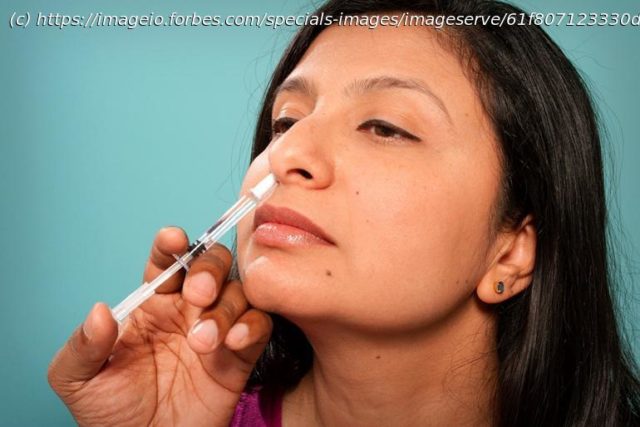Researchers at the University of Hong Kong are exploring a novel vaccine strategy aimed at increasing antibody activity throughout the respiratory system and supporting long-term protection against infection. This approach consists of a two-step process— injection plus intranasal booster.
A new approach to Covid-19 vaccinations may slow the spread of infection. We all know by now that current vaccines are not effective in preventing infection against Omicron. Although these vaccines may protect people from severe disease for a year or more, they are only effective for preventing infection for a few months. A new report suggests that there may be a way to not only protect against severe disease but also reduce the risk of infection. One weakness of intramuscular injections is their inability to block the virus at the primary site of infection— the nasal passages. As a result, researchers at the University of Hong Kong are exploring a novel vaccine strategy aimed at increasing antibody activity throughout the respiratory system and supporting long-term protection against infection. This approach consists of a two-step process— injection plus intranasal booster. The two-part vaccine strategy first employs an intramuscular DNA vaccine. Similar to the mRNA vaccines produced by Pfizer and Moderna, this injection exposes the immune system to part of the SARS-CoV-2 spike protein used for viral entry into host cells. In the presence of this viral antigen, the immune system produces neutralizing antibodies to protect against future infection. The second part of this two-part strategy is administered through a nasal spray. Researchers constructed a viral vector from plasmid DNA commonly used for intranasal flu vaccines and genetically engineered them to also express part of the SARS-CoV-2 spike protein. In animal studies, intranasal vaccines have been variably effective in blocking viral replication before a virus has an opportunity to infect cells. While the first injection provides some systemic protection against the virus, an intranasal Covid-19 booster can strengthen immunity directly at the site of infection. For the first phase of this vaccine approach, Zhou et al. manufactured an intramuscular injection of a DNA vaccine. A sequence expressing SARS-CoV-2 receptor-binding domain (RBD) joined to a programmed cell death protein (PD1) gene sequence was fused to a pVAX plasmid backbone (RBD- PD1-DNA). The SARS-CoV-2 RBD, which appears as spike proteins on the virus’s outer surface, is a short fragment from the virus that binds to ACE2 receptors on host cells to gain entry. Preventing these proteins from binding to cells is an important target for developing neutralizing antibodies. Fusion of the PD-1 domain to the RBD antigen encourages T immune cells to bind onto the viral antigen and induce an immune response. To facilitate protein expression of the RBD antigen, a CMV promoter and human tissue plasminogen activator (tPA) were also inserted, as shown in the figure below. Packaging the viral antigen within a plasmid DNA allows the manufactured vaccine to reach the cell’s nucleus for synthesis of the viral RNA to begin.






